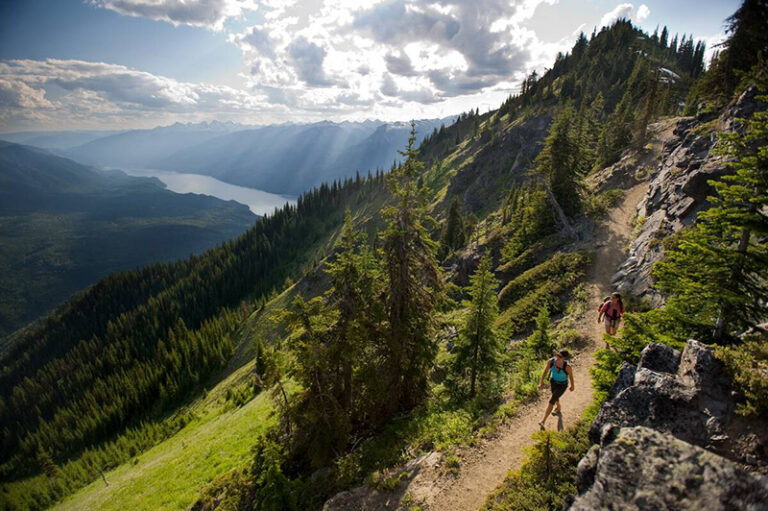It had been five years since I’d hiked to the lake. It was a modest alpine lake in the northeast Cascades, tucked in the Lake Chelan-Sawtooth Wilderness, an area of public land that had accrued meaning for my family through years of trips and storytelling.
The area had experienced a wildfire in my absence. The trail was now lined with waist-high fireweed, flaring pink in remembered flame. A sign at the trailhead warned hikers that the charred trees might suddenly fall, burned roots giving out without warning. I went up with my brother and dad—4,000 feet in 8 miles—in the glaring sun, talking, as we did on every hike, of the relief the lake would be when we reached it.
Around mile three, my dad began to visibly suffer. It wasn’t the regular strain of hauling a 30-pound pack up rugged terrain (the kind where you surmise the trail was made with goats in mind rather than humans). It was the beginning of heat exhaustion and overexertion. His face was pale. He was dizzy. He couldn’t catch his breath. We stopped for a long break in the middle of the trail.
My dad had always been my guide in the wilderness; he was the sure-footed leader with generational knowledge of backcountry skills. After some soup and electrolyte chews—and a very long rest—my dad was able to pick up his pack again. But he barely made it into the lake that day, and he said it as we baby-stepped up the final set of switchbacks: it was the last time he would get into this kind of backcountry.
His declaration colored the rest of the trip. Instead of crossing another pass on day two and hiking into a new lake, to route out a new loop, my dad sat in camp to recover. My brother and I hiked the pass and were rewarded with a stunning array of mountains to the west, Glacier Peak among them. I sat on that pass for a while. It was a view my dad would never see again.
My brother and I descended to the lake and spent the rest of the trip with our dad. We dodged mosquitoes and I tried my hand at fly fishing for the first time. As we cast, a thunderstorm rose and opened up on the valley below us. We watched rain fall in dark columns, but the sun remained in camp, giving the illusion that our time at that place was somehow preserved.
All the backcountry stories we usually told came forward that night, and then some. My dad told a new one about my grandfather riding a motorbike into the area before it was designated a wilderness. My grandfather has been gone for a while, but the stories were as fixed to the place as the scree that lined the lake, or maybe the stars—shifting a bit with each telling, evolving as we did, but tied to that lake. It was a complicated solace to know that the place would remain even when my dad wouldn’t.
I’m grateful for that wilderness area, and that it can stay wild, whatever that looks like in the future. This is the power of the public lands we work to preserve, whether it’s for hiking, biking, hunting, fishing, or simply for the wildlife that live there. They’re places of stories, personal and communal, that date far back to the First Peoples who lived on the land.
Use the stories and resources in this issue—from fall road trips to a guide on what sort of recreation pass you’ll need—to make some memories with the next generation on our public lands. Sharing the wild places we cherish with others will give them the most powerful thing to fight for: love.
Lisa Laughlin, Managing Editor













